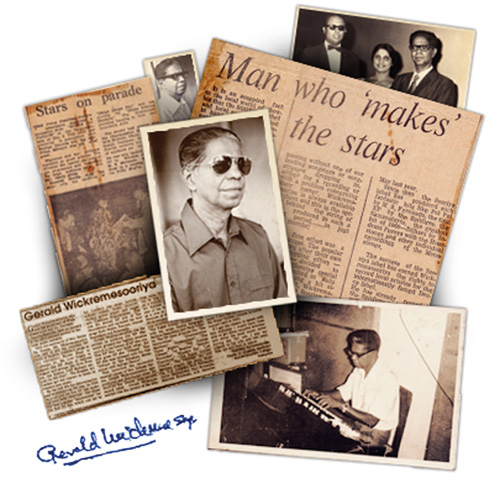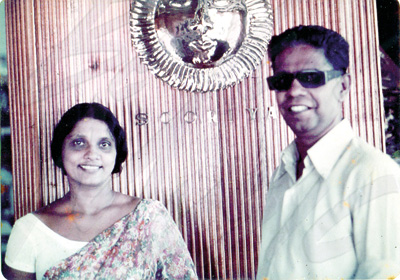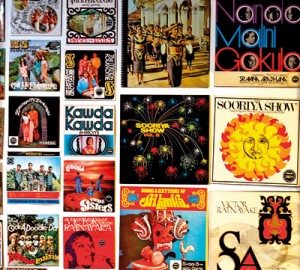Giving life back to those old tunes
It’s been fifty years since the launch of Sri Lanka’s renowned record label ‘Sooriya,’which was responsible for many popular hits from the late 1960s to the early 1980s. It went into a long hiatus, before the name was revived in 2016, in the form of the Sooriya Village as we know it today.
Although the times and the industry have changed, ‘Sooriya’ continues to uphold the values which it built itself upon back in the day producing high quality Sri Lankan music and treating all musicians with fairness and respect.
We met up with Udena Wickremesooriya, son of Gerald Wickremesooriya, the founder of Sooriya. Surrounded by the musical haven, which is the village itself, Udena gives us an insight into the label’s humble beginnings and its journey thus far.
Gerald had several interests in life and music was definitely one of them we are told. Entrepreneurship was the other. Hailing from Ambalangoda, whch was renowned for Folk music and art, Gerald was exposed to the field quite early on in life.
In 1959 Gerald and Dulcie Wickremesooriya started out the business as ‘The Children’s Bookshop,’ located near the Fort Clock Tower at No. 20, Queens Street. The business soon expanded to include children’s records offering kids of all ages the combination of education & entertainment.
After purchasing the entire stock of the Lewis Brown’s record store the Wickremesooriyas entered the music business.
Udena recalls his father relating the release of Elvis’s ‘wooden heart’ album. Gerald had imported almost 200 albums (which was a big number back in the day) and as he was driving to the store, he noticed a long line of people. He was trying to figure out where they were all going to. He parked his car and made his query, only to find they were all there to purchase the album.
This was when he realized there was an opportunity in the business.
On November 20, 1968 the Sooriya label signed its first agreement with the ‘Moonstones’. “More Hits by The Moonstones” went on to become an instant hit. Though released first, this was however the second contract signed with the band.
That was really how life began at the label. Since then Sooriya has always been about local artists and original music. The Wickremesooriya residence at 5, Sea View Avenue, Colombo 03 was the location where many artists were discovered.

Gerald and Dulcie Wickremesooriya. Pic courtesy Sooriya Village
Sooner hits were churned out and many new artists became the stars of the Sooriya label.
“The difference that we made in comparison to the others was that there was always a newness and good quality music with a lot of attention to detail,” Udena explains. There was also a lot of promotion, ‘Sooriya’ was synonymous with taking local originals and making it people friendly through multiple avenues. It had its own radio show, live shows, paper articles etc.
Udena tells us at the time there was a single mic, as opposed to the multiple mics, you’d see in a studio today. There were also single tracks, which meant that everybody had to play at the same time. The technology was very basic, the engineer would give the signal and the musicians would play.
From an engineering point of view the sound balance, the setting up of each musician and the voices was such a critical task. And to a musician, a song would sometimes go up to 30 takes.
Udena still remembers the recording sessions of Priya Peiris and La bambas. When they’d play the guitar the engineer would ask them to move it to a side because the voices couldn’t be heard. And when they’d play the lead in a song, the guitars would have to come back to the front and go to the side soon after it was over.
As a kid Udena would go for almost all the recording sessions. To him the best thing about them was that it felt like family. “There was no competition. Everybody helped each other and they really enjoyed it,” he says.
In 2016 Gerald’s grandson Sanchitha Wickramasooriya had a vision of reviving the label. And the Sooriya village was the first step of bringing the name ‘Sooriya’ back into people’s minds. The re launch of the label itself would take place as they move on.
“The Sooriya Village is just the start and not really the end for us,” Udena says. ‘Sooriya’ is currently in possession of all the past recordings in their original spool tapes. Udena tells us they are in the process of transferring these analog recordings to digital format, keeping as much of the original quality as possible.
“Personally we’ve put in that effort to try and preserve the music. We want to give people the chance to listen to the music from that era in the best quality possible,” he says.
One of their biggest tasks for the coming year is to convert many of these recordings and release them in various formats, vinyl being one of them.
Udena adds the project should be completed by April 2019.
Their journey itself since the launch of the village has been both fun and a learning experience, primarily because the Wickramasooriya family does not come from a restaurant background. But as Udena puts it, “anything that challenges you and makes you learn is a fun journey.” In this sense it has been very rewarding. But their biggest achievement of all is that people still remember the Sooriya name and the values that they’ve brought to the music industry.

Udena

Pix by M.A Pushpakumara


